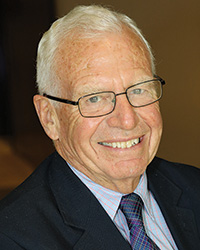The Federal Open Markets Committee is foot dragging - by Kirk

Being late to the cutting date has started to color commentary on data and apparent conditions. Without much impact on the markets. Go figure. Innovation, including Artificial Intelligence and automaton, personal and business services, construction, among other sectors, are continuing to add jobs while trimming, in different directions. Making space, climate ready and efficient, flexible with predictability, appropriate for contraction and expansion, all are essential strategies in commercial property, on time, online. The built environment must have malleability for right sizing and servicing. Costly and consumptive. Limits of time and, increasingly, labor. Let’s do it.
Real estate directors have been part of the strategic business plan for decades or longer. Until these new directions slow the process, the built environment must strain to stay ahead, be ready and in place. Because of lead time for planning, permitting and construction, the built environment must have more and larger malleable edges. Remember flex space and business parks with incubators and large multi-tenant distribution, in high rise configuration. Or not.
Remember FLEX space. Remember Retail - entertainment, exercise, healthcare, personal services. Life sciences dominated Boston real estate markets until cycling down. Change of use is no longer a marginal value add strategy; adaptive reuse is a dominating real estate strategy, supported by climate readiness improvements to existing inventory.
Automation, artificial intelligence, lab research, wet/dry, zooming, hybridization, indoors/outdoors, inside/outside. All to be reconciled in the built environment and related utilities and services. And mobility must be integrated effectively for commutation, supply chains, and disposal of wastes. Getarounds are important. And should be reasonably considered, approved, in a timely and orderly, expedited manner, with safety, security, wellbeing and climate readiness.
Calling for jobs, for training, for capital. The pause is over. The pivot is now well established, the patterns and protocols are still evolving and capital sources are adapting.
Nevertheless, the Federal Open Markets Committee is foot dragging. Traditional banking is jerking with the regulator and the uncertainty of related market rates. Because of the resilient and even buoyant economy, stewards of the built environment have choices and sluggish funding. Flowing sluggishly with non-banking sources.
Heather Cox Richardson in her letter June 7, 2024 offers an ordering of the data of the day:
The first is the Bureau of Labor Statistics today released another blockbuster jobs report. The country added 272,000 jobs in May, far higher than the 180,000 jobs the economists predicted. A widespread range of sectors added new jobs, including health care, leisure, government and hospitality, and professional, scientific and technical. Wages are also up. Over the past year, average hourly earnings have grown 4.1%, higher than the rate of inflation, which was 3.4% over the same period.
Deals are getting done. Finding the fit for two or more parts is gameful. The risks and rewards abound in changing real property markets.
Unintended consequences and collateral damage from the FED foot dragging is more than a speed bump. The time is now to avoid further roadkill on the way to easing inflation with a hammer that was not designed for screws. And not watching where you swing or what you are trying to do. Hit, smash recklessly, without peripheral vision. Shortsightedness. Inform the vision and manage the mission.
We still need places for the web to spin, A place to sleep, stay warm and dry, together; a place to eat, stay strong and full or enough, together; a place to read, think and learn, stay connected, together. Sing and dance and make things, together. Connecting, fabricating, doing and dreaming.
David Kirk is founder, chief executive officer of Kirk & Co., Boston, Mass.
Boyle of Chozick Realty negotiates $7.95m sale of 66-unit property







.png)